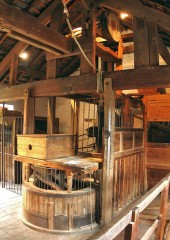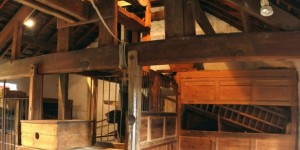Few human behaviours induce more intense feelings of horror, disgust and revulsion - and fascination - than cannibalism
(Stoneking 2003, 489)
In the 1960's the discovery of the Wari tribe in the western Brazilian rainforest sent a ripple of excitement through the anthropological community. A tribe that existed deep in the Amazon, untainted by the rigours of westernised society. Yet this excitement was short lived when public fascination transformed into horror and disgust. The reason? The Wari tribe indulged in ritual feasting which involved roasting and eating their dead (Conklin 1995, 75).
The above quotation by Stoneking (2003) succinctly summarises general feelings towards cannibalism both in the public and the academic community. It is a taboo subject that is assigned to the realms of political incorrectness accompanied by its friends 'savage' and 'primitive'. Traditionally, cannibalism was used as a "psychological mechanism of dehumanizing enemies in order to justify actions against them" (Ortiz de Montellano 1978, 616), namely mass genocide and dispossession by colonial powers in the Americas. Yet despite this reluctance among archaeologists to cry 'cannibalism' it never fails to generate a morbid fascination when the evidence suggests that our ancestors were indeed eating each other. The most detailed, documented case of cannibalism comes from South-West Colorado, more precisely the Mesa Verde region.
Approximately 1150AD a violent episode occurred in a small habitation in the Mesa Verde region of South-west Colorado. Seven individuals were systematically dismembered and defleshed and subsequently cooked. The remains were then discarded and abandoned along with tools on the floor of two pithouses (Billman et al 2000: 145). The detailed analysis of the site by Billman et al (2000) came under intense criticism by Dongoske et al (2000) who claimed that the former were selective with their findings in favour of the proposed cannibalism theory and that the Mesa Verde site was not clear evidence of cannibalism. Of course in order to believe this Dongoske et al (2000) had to ignore the sensational evidence uncovered by Marlar et al (2000). This evidence was in fact a preserved coprolite from the site that had been deposited after the proposed butchering and consumption of humans (Marlar et al 2000: 76). Subsequent analysis of this coprolite revealed that traces of human myoglobin were indeed present in the coprolite. The structure of human myoglobin is such that it cannot be found naturally occurring in human stool material (Marlar et al). Therefore the only way it could have been present in the coprolite is if the depositor had in fact consumed human flesh. Marlar et al (2000) have, it appears, presented convincing evidence to suggest that cannibalism was the, or one of the primary motives behind the sudden and deeply violent incident at the Mesa Verde. Of course it has been argued that this coprolite did not belong to a human but rather a carnivore (Dongoske et al 2000) however, the circumstances and the context in which it was deposited suggest quite strongly that it was human.
Yet the question remains; why? If the attack was indeed a result of starvation cannibalism (Fetterman and Honeycutt 1990; Kane 1986; Nickens 1974, Hough 1902 cited in Billman et al 2000, 146) then what was the need for the high levels of violence and the blatant disrespect accorded to the remains? The total lack of ceremony or deference sits uneasily with this writer and it is impossible to ever know what really happened but one thing that can be certain is that cannibalism did happen at this site whether Dongoske et al (2000) choose to believe it or not. Their article appears to be no more than disgruntled first nation campaigners calling for more "rigorous adherence to scientific protocol"(Dongoske et al 2000) when it is already clear that in depth scientific study has taken place. I am by no means suggesting that their motive for writing the article is purely political. Indeed, their emphasis on a more open and reflexive archaeology is entirely relevant. Furthermore I agree that archaeologists should always make 'ethnicity and group identity' an important priority (Dongoske et al 2000, 188) when studying remains and speculating over their fate. However, they must also accept that cannibalistic acts may have been part of this Pueblo culture.
Cannibalism is an extremely contentious issue in archaeology as I have attempted to demonstrate. This of course is indicative of the conditioned westernised response whereby cannibalism is a vile act that should only be carried out as the last desperate resort of a starving man. It is fair to say that little is understood about the ritualistic nature of cannibalism. Referring to the aforementioned Wari tribe, Conklin (1995) writes, "the material motivations associated with endocannibalism were not biological needs...but concerns with structuring cultural meanings in regard to human-animal relations that were essential, not just to subsistence but to the entire social order" (1995, 95). Their intentional acts of cannibalism are linked to their belief in recycling energies and reaffirming socio-ecological security (Conklin 1995, 94). This act transcends the nature-culture barrier erected by Levi-Strauss (Conklin 1995). Cannibalism is symbolic of life's continuity after death as those that have passed on are joined once again with nature. There does not appear to be anything inherently barbaric about this deeply spiritual tribe's treatment of their dead. Indeed it is extremely emotive and displays a deep understanding of humanity's relationship with the earth.
In summary, I would like to refer to Marlar et al (2000, 77), "cannibalism has occurred in a wide range of societies for a wide variety of reasons...we hope that the debate will shift from whether or not cannibalism occurred to questions concerning the social context, causes and consequences of these events". Wiser words were never spoken - cannibalism did and still continues to happen for whatever reason and by refusing to approach it with an objective frame of mind we can never fully appreciate or begin to understand the function it played in past society. Cannibalism must now part with its friends 'savage' and 'primitive' and be elevated to join the ranks of the 'symbolic' family whether it be cultural, biological, economical, political or simply 'spiritual'. ## Bibliography
- Billman, B. R., Lambert, P. M., and Leonard, B. L. (2000) 'Cannibalism, Warfare and Drought in the Mesa Verde Region during the Twelfth Century A.D.' American Antiquity 65 (1): 145-178
- Conklin, B. A. (1995) '"Thus are our bodies, thus was our custom" mortuary cannibalism in an Amazonian society.' American Ethnologist 22 (1): 75-101
- Dongoske, K. E., Martin, D. L. and Ferguson, T. J. (2000) 'Critique of the claim of cannibalism at Cowboy Wash.' American Antiquity 65 (1): 179-190
- Marlar, R., Leonard, B., Billman, B., Lambert, P. and Marlar, J. (2000) 'Biochemical Evidence of Cannibalism at a Prehistoric Puebloan Site in Southwestern Colorado.' Nature 407: 74-78
- Ortiz de Montallano, B. (1978) 'Aztec Cannibalism: An Ecological Necessity?' Science 200 (4342): 611-617
- Stoneking, M. (2003) 'Widespread Prehistoric Cannibalism: easier to swallow?' Trends in Ecology and Evolution 18 (10): 489-490





